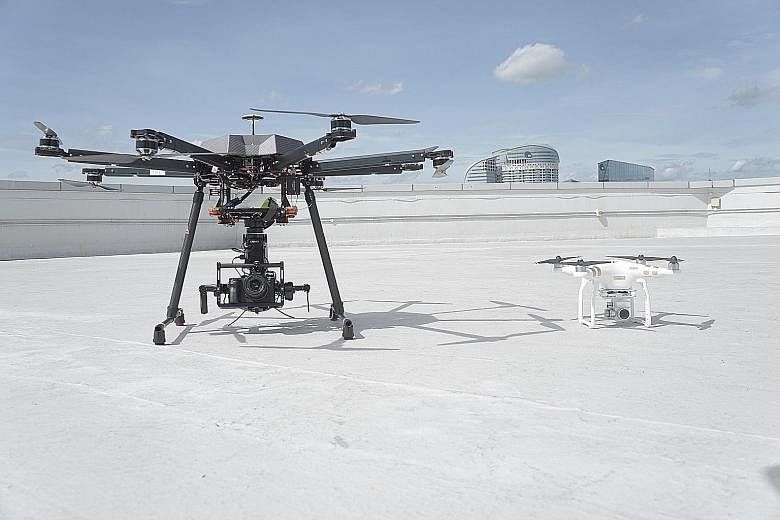The drones used for professional, industrial work aren't the kinds you see hobbyists toting around on weekends at the Marina Barrage.
While professional drone operator firms also use off-the-shelf drones - such as high-end models from brands like DJI or Freefly - there are professional models on the market tailored more towards industry use.
Here are a few ways professional drones differ from hobbyist drones:
NUMBER OF PROPELLERS
Consumer drones are usually quadcopters - the drone body is equipped with four rotors. This provides more than enough power for them to remain in the air for about half an hour andcarry the weight of an attached camera.
Industrial drones, on the other hand, can have up to eight rotors, which are necessary to provide enough power to carry larger cameras, like DSLRs, or other equipment.
More rotors also mean greater propulsion redundancy, said Avetics' Mr Zhang.
Such propulsion redundancy is important for safety, he said, as that means drones can stay airborne and be landed safely even if a rotor fails while the drone is in flight.
"If a quadcopter rotor fails, the whole drone may crash," said Mr Zhang. "But industrial drones have been tested to withstand rotor failure in mid-flight, and the operator can still control and land it safely."
PAYLOAD
Most consumer drones come with attached cameras for hobbyists to take aerial shots. However, these cameras are fixed to the drone.
Professional drones give operators the flexibility of mounting their own cameras - such as DSLRs or camcorders - for higher-resolution photos and videos.
Sometimes, the drones don't even carry cameras. Sensors such as laser scanners, temperature sensors or gas sensors can be fitted on drones doing surveying or data-gathering work.
This also makes them much heavier and bulkier than consumer drones. A custom Avetics drone weighs between 7kg and 15kg, depending on the payload, while the DJI Phantom 4 weighs only 1.4kg.
COST
Consumer drones generally top out in the low thousands, while professional-grade drones are significantly pricier.
Custom-made drones, like the ones Avetics uses, can cost more than $10,000 to produce, depending on the type of equipment strapped to it.
Lester Hio


